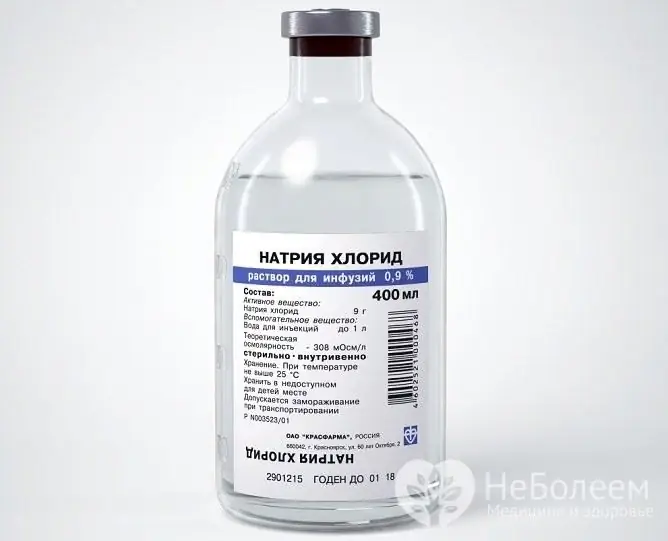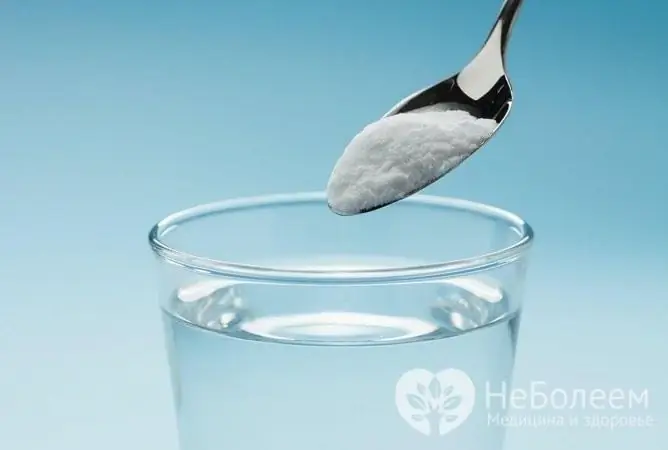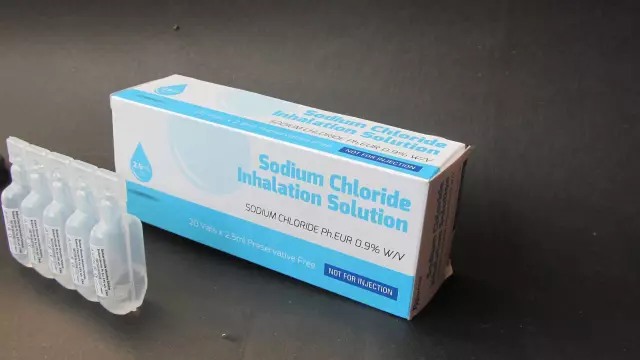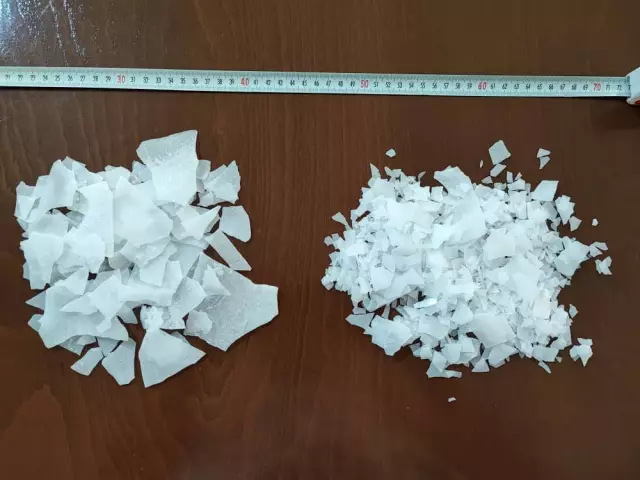- Author Rachel Wainwright [email protected].
- Public 2023-12-15 07:39.
- Last modified 2025-11-02 20:14.
Hypertonic salt solution: what it is, medicinal properties, how to prepare and use
The content of the article:
- The healing properties of hypertonic saline solution
- How to prepare a hypertonic salt solution at home
- Methods of using a hypertonic solution
- Video
A hypertonic solution is a liquid with a sodium chloride concentration of more than 0.9%. The hypertonic environment causes the release of water from the cells (including erythrocytes), causing their shrinkage. In addition to hypertonic, there are isotonic and hypotonic solutions. Isotonic are aqueous solutions isotonic to blood plasma, the osmotic pressure of a hypotonic solution is lower than that of blood plasma.
The prepared pharmaceutical solution contains sodium chloride and distilled water. Sodium chloride is known in everyday life as table salt and is its main component.

In addition to hypertensive, isotonic salt solution is used in medicine
This tool can be purchased in a pharmacy network or prepared on your own, but this does not mean that the drug is absolutely safe. In order to avoid the development of adverse effects, you should consult a doctor before using the solution.
Saline solution refers to the drugs that, according to doctors, have a minimum number of contraindications. For local application of the solution (microclysters, rinsing, rinsing, dressing), an individual intolerance to the drug may be a contraindication, which is also a contraindication for its intravenous administration.
The healing properties of hypertonic saline solution
Hypertonic sodium chloride solution is used in medicine for the treatment of purulent wounds, as an auxiliary osmotic diuretic for cerebral edema, to increase blood pressure during bleeding, in conditions characterized by a deficiency of chlorine and sodium ions, in case of poisoning with silver nitrate. The product is used for rinsing the mouth for gum diseases, for compresses for arthritis, for rinsing the nose for respiratory diseases, for lotions for insect bites and lichen, as part of masks for strengthening hair and treating the scalp, for cosmetic purposes - for peeling the face and body, and also for relaxing baths. The solution is used for migraine, bronchial asthma, chronic appendicitis, gynecological diseases, for frostbite of the extremities, purulent wounds and many other pathologies,usually in combination with other treatments.
For infectious and inflammatory processes in the oral cavity, nasal passages, maxillary sinuses, a 1-2% sodium chloride solution is used, which is able to suppress the growth of microorganisms, reduce pain and relieve swelling.
A solution of salt with a concentration of the main substance of 5-10% is used for purulent wounds, as well as for enemas with a prolonged absence of defecation (especially after surgical interventions on the organs of the gastrointestinal tract), since it has a pronounced antibacterial effect, reduces pain, and also softens feces mass and stimulates bowel movements.
Saline solution of 10% concentration is usually used for profuse external and internal bleeding, with oliguria and anuria.
In the absence of urine excretion, sodium chloride solution is used exclusively in the presence of strict indications. With heavy bleeding, it is rarely used now (other, more effective drugs are used).
If too much of this solution is injected intramuscularly or into the patient's stomach, he may develop thirst, convulsions, confusion, coma, and cerebral hemorrhage. Intramuscular and subcutaneous administration of the solution is unacceptable, as it can lead to tissue necrosis.
How to prepare a hypertonic salt solution at home
Depending on the pathology for the treatment of which the salt solution will be used, as well as on the method of application, different concentrations of it are required. For parenteral administration (i.e., in the form of injections and intravenous infusions), an exclusively sterile pharmaceutical preparation is required; for other procedures, for example, for rinsing the nose, you can make the solution yourself at home.
For rubdowns, instillations, rinsing the throat, rinsing the nose, lotions and baths, 1-2% hypertonic saline is usually used. For an enema, a 5% solution is used, for dressings - no more than 8%, for gastric lavage - 2-5%, the concentration of the solution for intravenous administration is selected exclusively by the attending physician.

For rinsing, you can prepare a hypertonic solution yourself
The recipe is simple - pour the required amount of water into a saucepan, add salt, bring to a boil and cool. To prepare a sodium chloride solution at home, you should take purified water, the salt concentration in the solution should not exceed 10%. So, for example, when using a solution for gargling, 4 g of table salt is usually taken in a glass of water.
Methods of using a hypertonic solution
Saline dressings use breathable tissue to aid in the absorption process. Gauze folded in 8 layers, cotton fabric folded in 4 layers can be used. The place on which the bandage will be applied should be washed with soap, there should be no residues of any medicines on it. The dressing should not be wrapped with other fabrics and / or materials that would create a warming effect. It is recommended to secure the dressing with the hypertonic saline solution with a bandage or adhesive plaster. After the procedure, the site of the dressing should be washed or wiped off with a wet towel. It is not recommended to keep such a bandage for more than 10 hours.
Use a warm sodium chloride solution for rinsing. It is recommended to rinse your mouth and throat, as well as rinse your nose in the acute period of the disease every 4 hours. Depending on the symptomatology, the duration of treatment is 3-5 days.
In case of insect bites, it is recommended to make a lotion with a sodium chloride solution as soon as possible, within the first hour. To do this, moisten a napkin with a 2% salt solution and apply it to the damaged area for 5-10 minutes. In the case of a wasp or bee sting, before carrying out the procedure, you need to make sure that there is no sting left in the wound.
For gastric lavage in case of poisoning with silver nitrate, a 2-5% sodium chloride solution is recommended to be taken internally or administered to the patient through a gastric tube if the victim cannot drink on his own (this procedure is performed in a medical institution). Usually, no more than 500 ml of salt solution is used.
Video
We offer for viewing a video on the topic of the article.

Anna Aksenova Medical journalist About the author
Education: 2004-2007 "First Kiev Medical College" specialty "Laboratory Diagnostics".
Found a mistake in the text? Select it and press Ctrl + Enter.






